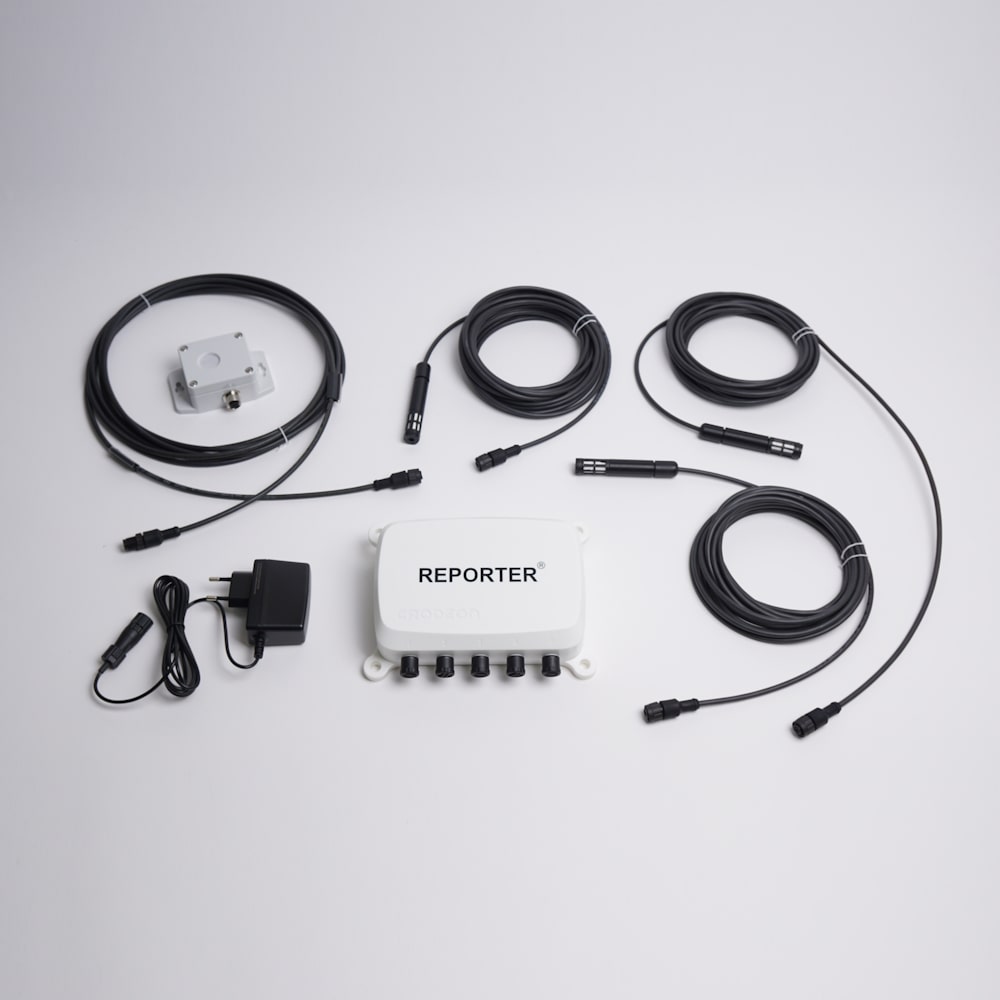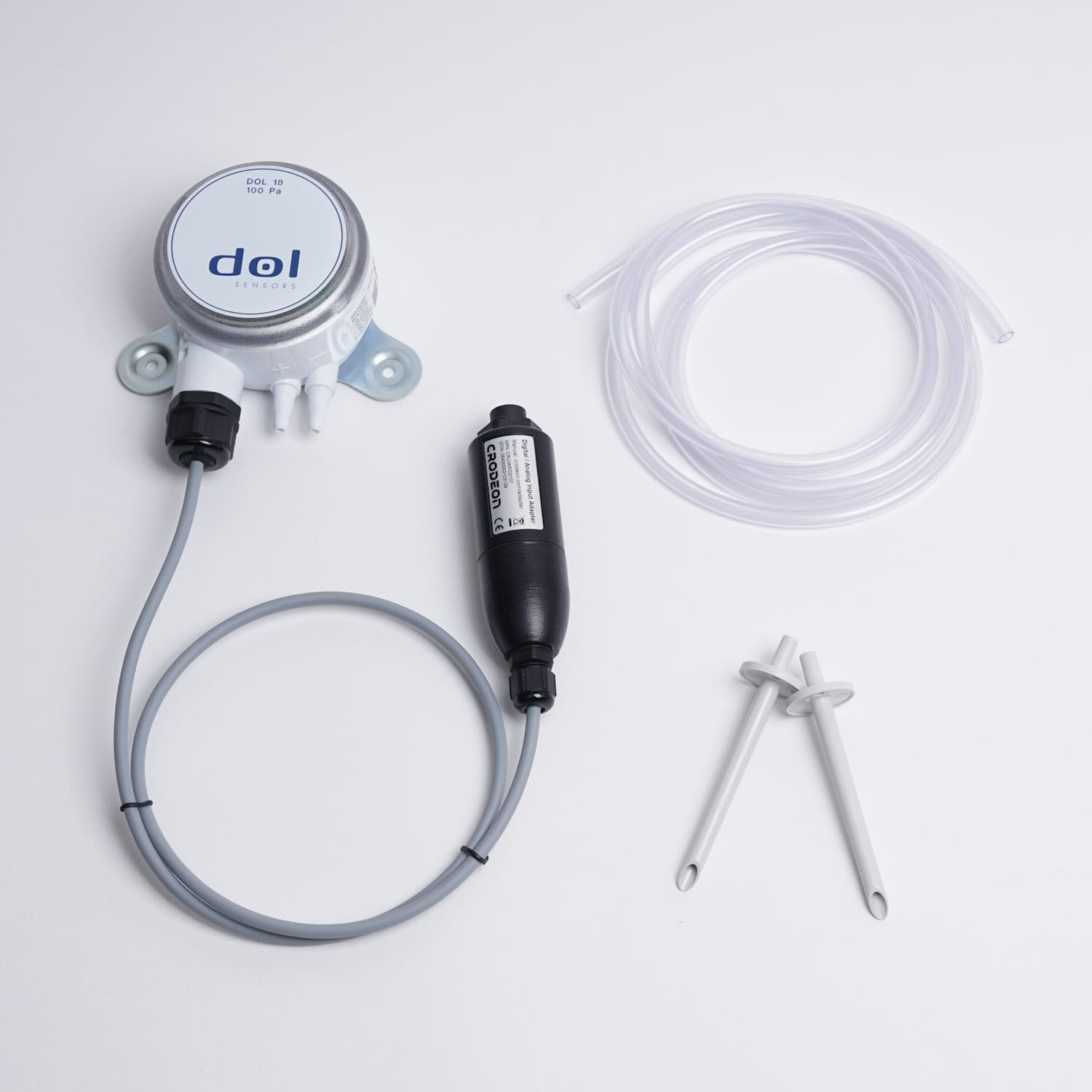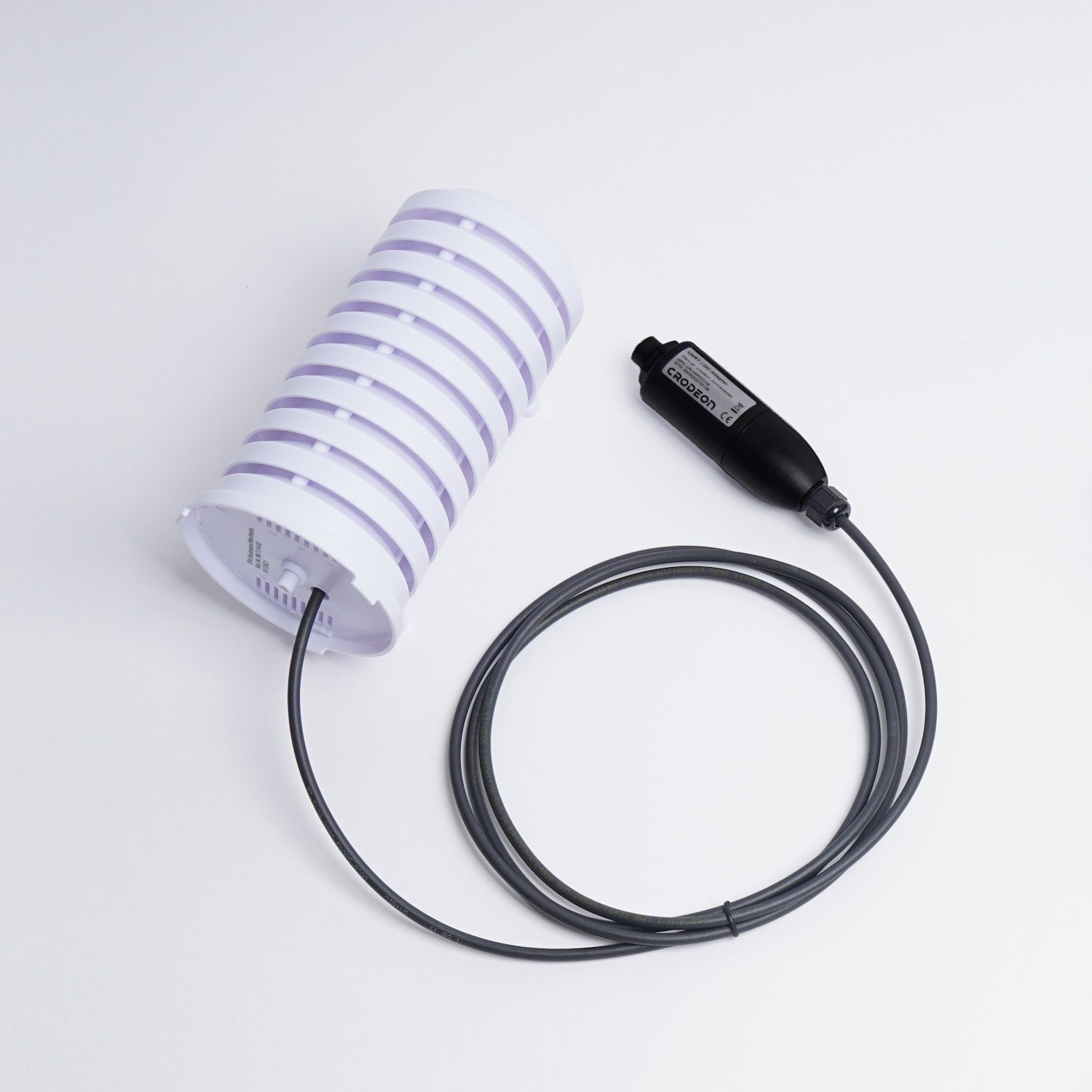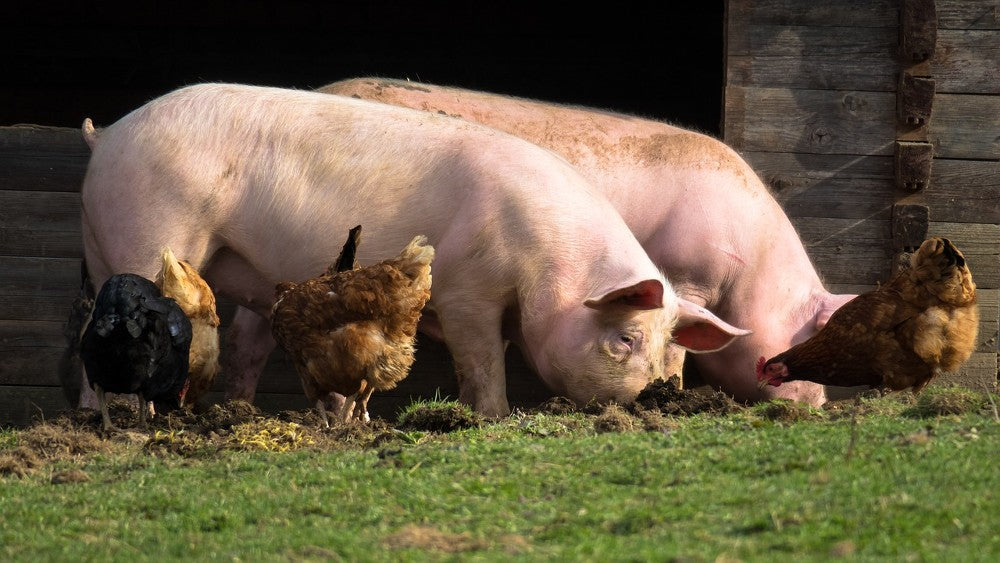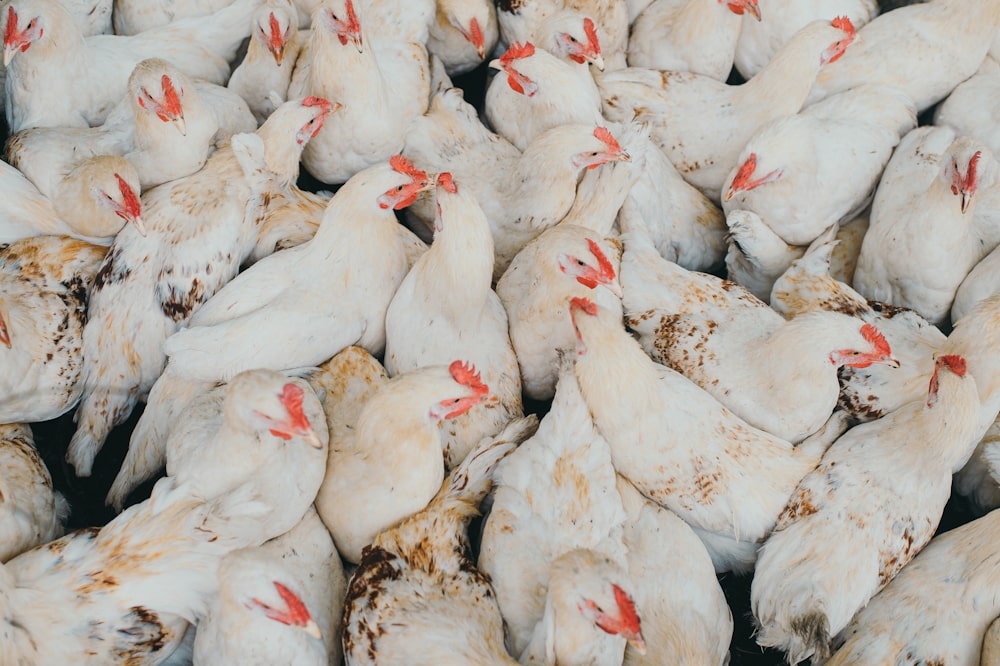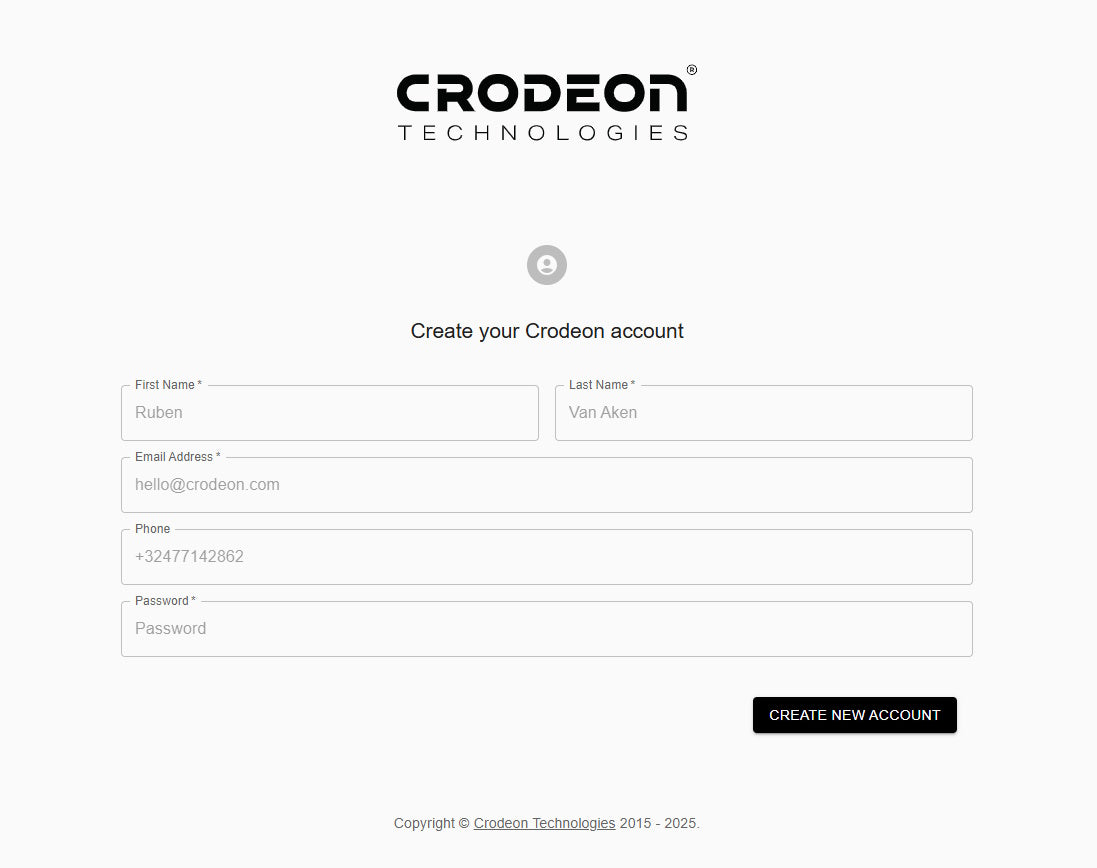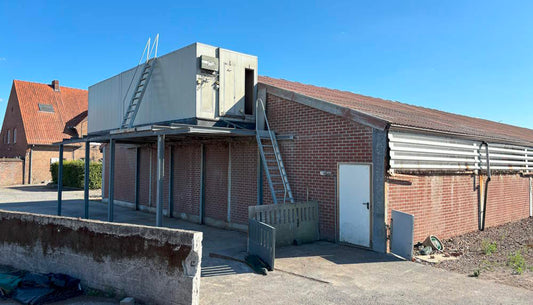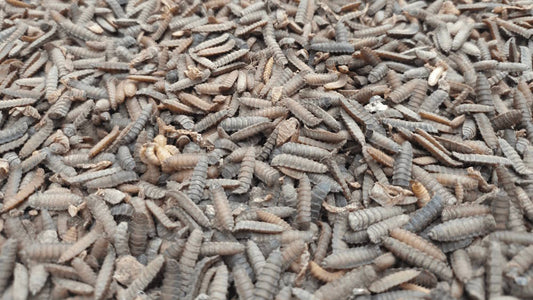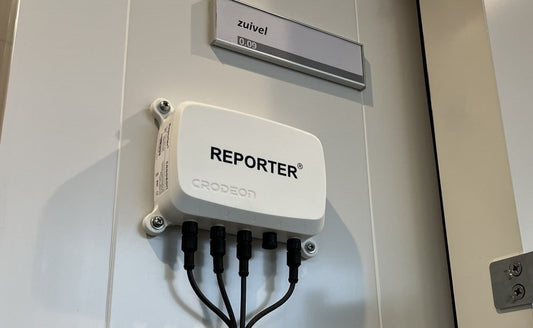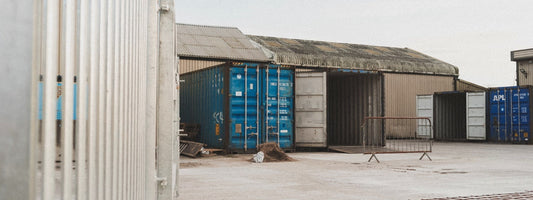Housing requirements for a poultry farm: the complete guide
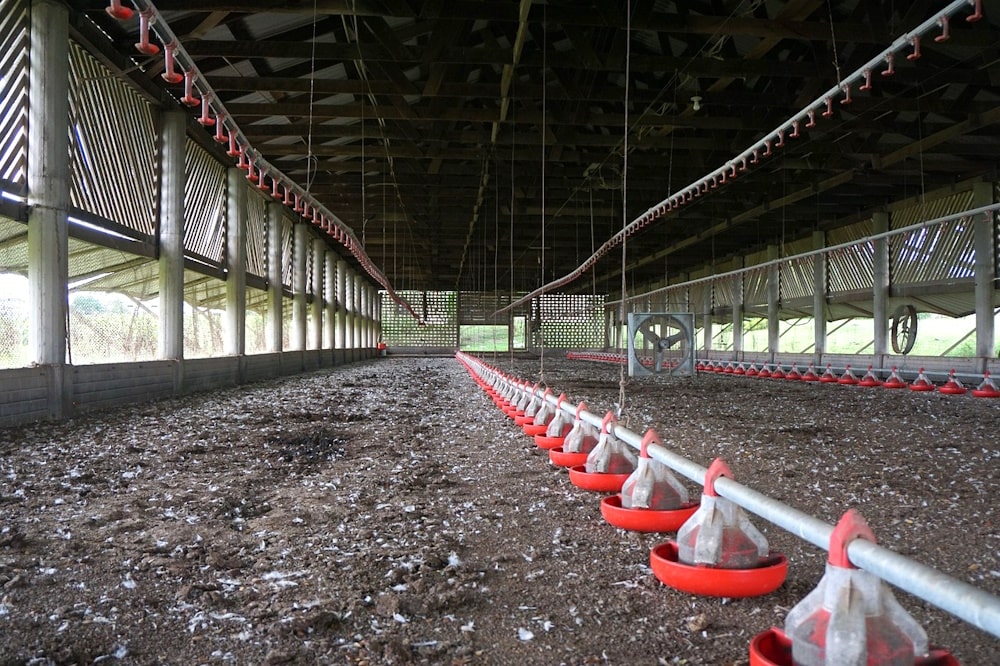
Starting a poultry farm is no impulsive decision and needs quite some planning as there are quite some requirements for poultry farming. However, with the right preparation, you'll be sure to succeed. This is why we decided to write this extensive guide based on the advice of experienced chicken farmers as well as official laws and regulations concerning keeping broiler and layer poultry. We'll be discussing chickens, turkeys, ducks and some other species of birds.
In this blog we'll be taking you through the essentials for how to start a chicken farm. Covering topics like laws and regulations (focused on the United Kingdom, the Netherlands, and Belgium), feeding and drinking stations, housing, climate monitoring and water requirements for poultry.
Index
- Importance of proper housing in poultry farming
- Key elements in the design of a poultry farm
- Choosing the right location and materials
- Insulation, placement and building materials
- Smooth materials and safe equipment
- Bedding
- Flooring
- Vehicular access
- Space and layout considerations
- Natural behaviour and enrichment
- Don't overcrowd your coops
- Easy sanitation and health inspection
- Sick rooms
- Evacuation plans in case of catastrophes
- The right indoor environment for poultry
- Ventilation
- Lighting
- Circadian rhythm
- Heating
- Cooling
- Essential features of chicken farm buildings
- Protection against rain
- Protection against the sun
- Fresh drinking water
- Feeding stations
- Provide grit
- Provide additional calcium
- Protect against unwanted guests
- Keeping the spread of disease under control
- Special housing requirements for poultry per type
- Special requirements for laying hens
- Special requirements for broiler poultry
- Special requirements for hatching eggs and training chicks
- Start optimising your poultry housing for health and productivity
- Vocabulary
- Sources
Importance of proper housing in poultry farming
Whether you decide to raise broiler or layer poultry, it's important for your flock to have a healthy living environment. Depending on different species of birds there are some slight differences. There are however general rules that seem to be applicable to chickens, turkeys, ducks and other birds alike.
To keep your animals safe and healthy it is important to provide adequate commercial chicken housing. Animals that experience stress are more vulnerable to falling ill, experiencing stunted growth, becoming aggressive or even dying.
For financial reasons, it may also be important to follow laws and regulations. When your way of housing or rearing are not compliant with your country's laws you may be fined or receive a lower price for your meat than you had intended.
Key elements in the design of a poultry farm
So what are the basic requirements for a poultry house? Running a successful poultry farm requires you to be mindful of many things. Poultry needs food, drinking water and shelter, of course. But a turkey, duck or chicken farm is so much more than that.

First, it is crucial to consider the indoor climate, including air quality, temperature, lighting, and sound. Pay attention to the layout and materials used indoors, such as flooring and bedding. Automation can be beneficial, such as implementing automatic egg collection or manure removal systems. Additionally, follow proper procedures for pest control, preventing overcrowding, and managing aggression among the birds.
Another essential aspect is the construction of the farm building. Ensure that it is well-constructed, with appropriate insulation and correctly positioned windows. Consider convenient parking areas for vehicles during broiler loading. It is important to have emergency plans in place for fire or flood evacuations, as these plans influence the farm layout. Develop strategies for dealing with extreme weather conditions, diseases, and maintaining shed hygiene. Determine the placement of a sick room within the building and consider its impact on airflow. Lastly, consider implementing an indoor climate alarm system for added security.
Choosing the right location and materials
Accommodations for securing poultry must be constructed and maintained to ensure the safety of the birds. This includes avoiding the presence of sharp edges or protrusions that could potentially cause injuries. Electrical wires should not be exposed and other potentially harmful materials (like toxic paint) should be avoided.
Moreover, it is crucial to use materials for the construction of pens, coops, stalls, and equipment that are not harmful to the animals. These materials should also able to be easily cleaned and disinfected to maintain a hygienic environment in case of a disease outbreak.
Be mindful of whether your ground is vulnerable to flooding or whether you build your barn in an area that is prone to forest fires.
Insulation, placement and building materials
To prevent heat stress in chickens and other poultry it would be wise to invest in proper insulation to keep the summer heat out of your coop. This means roof insulation as well as insulated walls.
When it comes to windows for letting in natural light, it would be wise to not position these on the southern side of your building as this would be a sure way to let lots of heat enter your shed.

Smooth materials and safe equipment
The use of smooth materials will not only decrease the risks of injury in your birds but it will also make sanitation of your coop easier. Metal perches for example allow for easy disinfection while their wooden counterparts aren't as easily cleaned off.
All equipment and materials inside the shed should be installed in such a way as to minimise the risk of injuries in poultry. Feeding stations, drinking stations, heating systems, ventilation systems and lights should regularly be maintained.
Bedding
Poultry bedding (or litter) is one of the main requirements for poultry farming, it should be able to dry quickly so as to not develop mould spots. Nor should bedding be too dusty as this could cause respiratory issues in both birds and humans. Dry bedding makes sure that the birds have a healthy and comfortable living environment.
There are several different options when it comes to bedding. There is no right or wrong bedding as long as it conforms to the following: not too dusty but suitable for dust bathing, highly absorbent, and it must be soft and scratchable. Different kinds of bedding are suitable for poultry: wood shavings, straw, peat, flax, hemp etc. as long as they are free of harmful substances or other things that could cause harm to the flock.
Chickens naturally want to take dust baths to stay healthy and protect themselves against pests like mites and lice. It also helps prevent their feather from becoming too oily.
Bedding should be about 10 cm deep to ensure a comfortable living environment for poultry. If you fail to see birds dust bathing, your choice of bedding might not be appropriate for your birds.

Your birds should have uninterrupted access to high-quality bedding at all times. Soiled or wet bedding (under drinking stations) should be removed as soon as possible.
“How do I dispose of the bedding after my flock is all grown and off to the slaughterhouse?”
In many cases, the soiled bedding can be sold off as a natural fertiliser. Especially peat mixed with chicken manure is a valuable ‘waste’ product to use in the agricultural industry.
Heipluim bv is experienced in using peat bedding and sells its soiled bedding to a firm that specialises in sterilising it for further use in the agricultural sector.
Flooring
When it comes to flooring systems in commercial chicken housing or other poultry, there are several options that all have different advantages.
- Deep bedding
- Slatted flooring
- A hybrid system of slats and bedding
A deep bedding system allows for a lot of scratching space for the birds, which encourages their natural foraging behaviour. 'Cleaning' the coop is done by topping up the litter with a fresh layer. Deeper layers start to compost over time. If a poultry house becomes smelly, a new fresh layer should be applied. A thorough cleaning of the shed should be done after every flock change (broiler birds), or several times a year for layer hens.
A slatted flooring system allows for easy cleaning as all manure and excretions fall through the slats. When you use a manure belt, the waste can be collected automatically. This method is very hygienic as organic matter is not present and all parts of the flooring system can be sanitised with ease. The downside however is that this option is very unnatural to the birds.
A hybrid system is a good alternative to give the birds a natural option that encourages natural behaviour, while also making your own cleaning work a bit easier when starting a chicken farm. The feeding and drinking area could be a slatted flooring system while the enrichment, resting and egg-laying areas have deep litter.
Vehicular access
Especially when you are rearing broiler poultry, it is important to design your shed in a way that easily allows a vehicle to park next to the building when the poultry is off to the slaughter.
Space and layout considerations
In this day and age where we become increasingly aware of animal welfare, commercial animal farms must adhere to stricter rules to ensure that their animals have a better living experience. Still, the balance between a happy bird and a well-kept bird must be maintained: farm staff and caretakers must be able to easily access all of the poultry areas for daily inspection and regular sanitation. So what are the basic requirements for a poultry house?
Natural behaviour and enrichment
Birds must have the opportunity to display natural behaviour, easily spread their wings, move their neck and head, and walk upright without running into the ceiling or another platform. They must have enough space to be able to keep themselves clean and sit down without touching other birds.

Enrichment is an important part of the housing requirements for poultry. It is beneficial as it promotes exercise, distracts from destructive behaviour, and improves overall well-being. It involves enhancing the living environment of birds to encourage desirable behaviours. Examples of enrichment methods include dustbathing boxes, straw bales, perches, platforms, pecking blocks, and roofed hutches. These items stimulate natural instincts and foraging behaviours, reducing aggression among birds. Enrichment provides safe refuges, additional space, litter, and access to natural daylight. Ultimately, it boosts positive behaviour, welfare, and health in poultry.
Birds must have some form of enrichment in their pens like hay bales to jump on or being able to forage for food by pecking at the floor. Chickens naturally want to take dust baths so their bedding must allow for this, or they require a different space for this.
Poultry love to roll around in the dust, which helps keep them clean and protected against pests. It also lets them socialise with each other. It's important to have enough good bedding for them to do this together without getting bothered by other birds doing their own thing. If you notice that only a few or no chickens are dustbathing, it could mean there's not enough space or the litter isn't suitable.
Water requirements for poultry differ per species. For water birds such as ducks, natural behaviour also means the opportunity to get into the water. Ducks need to be able to dunk their entire head into their water trough.
Poultry that wants to use perches should have these available to them. Chickens require at least 15 cm of space per animal.

The Beter Leven label (see vocabulary) requires the following enrichment for 1-3 stars chickens:
- Hay bales (1 per 1000 chickens)
- Scattered feed to encourage foraging behaviour (at least 2 grams per bird per day)
- Roofed hutches to walk in a daylit area (the size of the hutch changes per star rating)
- Pecking stones (required only for laying hens)
Turkeys too get to receive enrichment under the label:
- Hay bales (1 per 1000 turkeys)
- An extra enrichment object suspended from the ceiling, like a CD or rope to peck at (1 per 1000 turkeys)
- Access to daylight
- Roofed hutches (the size of the hutch changes per star rating)
- Equipment to jump on (only for 3 star turkeys)
The ‘hay’ bales can be hay, straw or alfalfa and should weigh 15-20kg per bale. The bales should be equally spread in the available space.
Don't overcrowd your coops
Different countries adhere to different rules when it comes to the maximum amount of animals per m2. The species of birds that you raise on your farm also greatly affect your space management. After all, a turkey and a chicken have a significant difference in body mass.
According to the Dutch Beter Leven regulations, a maximum of 12 chickens is allowed per m2 for 1 star. Many traditional chicken-rearing methods keep about 20 broiler chickens per m2 (plofkip, see vocabulary). This however can lead to poor health, boredom, bickering and aggressive behaviour as well as trampling of animals. Disease too thrives in dirty and full pens.
| Species | Birds per m2 | kg per m2 |
|---|---|---|
| Chicken (layer) | 7-9 | - |
| Chicken (broiler) | 11-12 | 25kg |
| Turkey (broiler) | 5-7 | 35-36kg for females, 35-40kg for males |
| Duck | 3-5 | - |
The United Kingdom currently adheres to different rules that are generally less strict. The prediction however is that more countries will move towards the Dutch model in the (near) future. Please contact your local government for the exact rules and regulations you must adhere to when you are thinking about starting a poultry farm.

Crowded chickens that have started pecking each other (feather pecking, see vocabulary) will look dirty and have damaged coats in the best case. Worst case they're weak and wounded which can lead to poultry cannibalism.
In layer hens it is especially important to ensure that there are enough nest spaces for the hens to lay their eggs in peace. When a nesting space is shared among too many hens the chance of broken and dirty eggs increases. Broken eggs that spill onto the floor or bedding are not only wasteful but might encourage unwanted behaviour in your flock: egg eating.
Easy sanitation and health inspection
The farm layout must allow for easy sanitation and routine inspection to guarantee the health of your flock. This means that all different areas must be easily accessible to not only the birds but also farm staff.
Sick rooms
Sick rooms where sick birds are kept should be far away from the other, healthy, poultry. When designing the layout of your coop, you should keep this in mind. If there is airflow through your building that passes through the sick room, this should not pass from the sick birds to the healthy birds.
Evacuation plans in case of catastrophes
In case of barn fires, floods or other catastrophes an evacuation plan must be in place to bring your poultry to safety. Adequate doors and escape routes should be strategically positioned throughout the barns, facilitating a smooth emergency procedure if a fire occurs. It is essential to design these escape routes to allow both the poultry and the farm personnel to evacuate safely.
For an added layer of safety, it is advisable to locate main power on/off controls outside the buildings. This placement ensures that power can be swiftly shut off in case of an emergency, reducing the risk of further exacerbating the situation.
When constructing new barns or modifying existing structures, it is vital to incorporate provisions that enable the quick and efficient release of poultry during emergencies. Additionally, careful consideration should be given to the choice of construction materials for commercial chicken housing, ensuring they possess sufficient fire resistance properties to minimise the risk of fire spreading.
To mitigate the risk of fire spreading, meticulous planning and installation of electrical, gas, and oil services are necessary. All electrical wiring, gas pipelines, and oil equipment should be installed in a manner that minimises the chances of overheating or generating flames that could ignite the building, litter or other flammable materials.
Installing a reliable fire alarm system is another crucial step in preventing barn fires and minimising potential casualties. Consideration should be given to employing fire alarm systems that can be heard and responded to at any time, day or night. One recommended poultry monitoring system is Reporter by Crodeon, which utilises temperature and CO2 sensors to detect fires in their early stages. When a fire grows the temperature in a barn will rise and CO2 levels will increase when organic materials burn. Reporter will detect this and send out alarm notifications to warn you to evacuate your flock.

The right indoor environment for poultry
Poultry needs the right indoor environment to stay happy and healthy. This means that you must pay attention to air quality, lighting, heating, and cooling.
Ventilation
A ventilation system needs to bring fresh air into your shed while removing toxic gases. At the same time, this fresh air can cool down the indoor temperature on hot summer days. Depending on your available space, bird species, and the amount of animals you have a certain volume of fresh air per hour is required.
The Belgian government recommends 9700 m3 of fresh air per hour, per 1000 chickens when they weigh 2kg. More details can be found in the guide ‘Huisvesting van vleeskippen’.
Without proper ventilation the air inside a chicken farm quickly becomes toxic. Poultry manure is rich in ammonia, which is a gas that causes an abundance of health problems. Especially when animals and humans alike are subjected to high levels of ammonia for an extended period of time, the chance of damage to the respiratory system is enormous.
A steady supply of incoming fresh air is crucial to ensure that your flock stays healthy. Do keep in mind that chickens do not tolerate draughts. The ventilation system must therefore be set up in such a way as to guarantee that the airflow does not harm the poultry.
When starting a chicken farm a ventilation system should:
- supply fresh air
- keep the bedding dry and loose
- reduce carbon dioxide (CO2), ammonia (NH3) and carbon monoxide (CO) levels in a shed
- reduce dust in the air
- keep the birds at a comfortable temperature (17°C-25°C)
- protect poultry against draughts
- keep relative humidity (RH) within an acceptable range (40%-60%)
Ammonia levels should not exceed 20 ppm, CO2 levels should not exceed 3000 ppm. Measurements need to be carried out at bird head height. RH inside should not exceed 70% when the outside temperature is below 10°C. Record-keeping of the concentration of gases in your shed is encouraged.
Vencomatic, a manufacturer of chicken housing systems resolves the issue of ventilation by placing air inlets directly above a moving manure belt. This acts as a blow-drier for the manure, reducing ammonia from escaping the droppings, while also making sure the air inlets do not cause a draught. Try to look for a modern system when you're thinking about how to start a chicken farm.
Air outlets are often placed near the roofs of the poultry house. As ammonia is lighter than air, it will naturally escape the building this way. Do pay attention to the fact that an ammonia water vapour mixture on the other hand, is heavier than water.

As ventilation systems are crucial to animal and human well-being, it is encouraged to install an alarm system for remote poultry monitoring. This alarm system can detect that the ventilation has stopped working as it measures and monitors the following:
- CO2 levels: a rising CO2 level indicates that no fresh air is being brought in
- Rising temperatures: rising temperatures indicate that cold outside air is not being supplied
- Power outage detection: the monitoring device can detect a general power cut when it is plugged into a socket
- Automatic record-keeping: as an added bonus this system automatically keeps a record of historic CO2 and temperature measurements inside your poultry house
Such a remote monitoring system for poultry farms is Reporter by Crodeon. The user-friendly plug & play device allows you to keep a close eye on your poultry, even when you're not there. It will be your extra pair of eyes as it will immediately alert you in case of an emergency.
UK regulations as well as Beter Leven regulations require you to have a system in place that warns staff when a ventilation system fails or breaks down. This should be in place for all species of poultry.
When it comes to the ventilation system you always have to keep in mind in what directions you want to place your air inlets and outlets on the outside of your barn. As the North is generally cooler this is the best inlet direction for the summer. Your air outlet can be placed in one of the remaining three directions.
Lighting
In traditional poultry husbandry, artificial lighting is acceptable as a basic requirement for a poultry house. Stricter animal welfare laws however require you to provide sufficient daylight in your shed. According to the Dutch Beter Leven label, a turkey and chicken coop requires at least 20 lux of daylight. Daylight can enter the shed through windows in the walls or on the roof. Additionally, reflective roof light tunnels are also allowed to bring in more natural light.

At least 80% of the active area should be lit with 20 lux for 8 hours. Only in special cases should you decrease the light levels in a coop, like when a veterinarian advises it to stop destructive behaviours among the flock.
Lux levels should always be measured at bird-eye height. A lux sensor helps you measure and monitor whether the light levels in your coop are appropriate. With an automatic monitoring system, you can track and measure the light levels in your shed as well as record when and for what duration these lux levels were maintained.
When it comes to turkeys, these recommendations change. The UK government animal welfare code for turkeys notes that “turkeys kept in daylight can be vicious”. A suggested way to manage this behaviour is to either control the light to be less bright, or perform beak trimming if necessary.
Circadian rhythm
Just like humans, birds have a circadian rhythm, which means that they need a bright day and a dark night. Poultry needs 8 hours of uninterrupted darkness and 8 hours of light. To encourage egg laying in hens a dimly lit transitional period should be implemented of 1-5 lux.

Heating
Adult poultry has a developed feather coat to keep the birds nice and warm. Young chicks, ducklings and poults on the other hand merely possess some peach fuzz. This makes them susceptible to hypothermia.
Some sort of heating should be installed to keep your shed warm enough for your birds during the first three weeks of their lives. A temperature of 33°C-35°C is ideal for young chickens, the building should always be prepared and heated to accommodate a new arrival of chicks.
Cooling
Heat stress in poultry is a dangerous phenomenon that mainly occurs in poultry farms during hot summer days or when ventilation systems fail.
A cooling system must be in place to lower the temperatures inside your coop as it is one of the requirements for poultry farming. Cooling is often done through misting, as evaporating water has a cooling effect or through the ventilation system itself.
Adult birds can start experiencing heat stress starting at 25°C. While young birds generally require warmer temperatures than adult birds, they are still susceptible to avian heat stress. Temperatures of 40°C and up require cooling to keep the young birds safe.
Essential features of chicken farm buildings
What are the basic requirements for a poultry house? Of course, you will need feeding stations, drinking systems, and a shelter to keep your birds safe from pests, predators, and bad or extreme weather.
While some sun is no issue and neither is some rain, excessive temperatures or a heavy downpour can pose a problem. Wind too can be a problem as chickens do not handle draughts well.
Protection against rain
Chickens are relatively waterproof due to their feathers, which means that a light drizzle is no problem for your flock. A heavy downpour on the other hand can pose a real problem as a chicken can become soaked. Especially when it's cold and windy this can lead to problems as your chicken becomes too cold.
Hypothermia can lead to a plethora of health problems, so do try to avoid your chickens becoming too wet.
Other types of poultry have a different relationship with water. Ducks need water to stay healthy and have no problem with rain as their coats are very water resistant. Geese, like ducks, have no qualms with rainy weather. Turkeys and quails need to be sheltered similarly to chickens.

Protection against the sun
Prolonged exposure to direct sunlight can cause heat stress in your birds, especially when the sunlight is strong and the temperature is high. Shade or shelter should be provided to protect your flock. A ventilation system with cooling can help keep the temperatures in your shed under control.
Fresh drinking water
Poultry needs access to fresh water at all times, especially in hot weather when dehydration risks are high. Young animals and animals who are mostly fed a dry diet are most susceptible to dehydration. A pot of water is not suitable for large groups of birds as it will become unclean quickly and does not conform to the water requirements for poultry.
A water system that minimises water waste is one of the housing requirements for poultry. It will save money on both water and new bedding. Water nipples with drip cups prove to be a great way to guarantee access to fresh water for your birds while keeping your pen clean.
When it comes to water there are strict regulations you need to conform to:
- maximum 10 chickens per drinking nipple
- minimum 2.5 cm space per bird at a drinking trough
- at least 2 drinking points must be within reach of each bird
- water cannot contain harmful substances

UK regulations force you to think about access to safe drinking water for your flock if there would be an interruption in the tap water supply. You should ideally have a backup water source for your poultry to guarantee a fresh water supply at all times. You are encouraged to make arrangements with neighbours who might have boreholes. The minimum amount of water a bird needs is 0.5L per animal, this only applies to when rationing is absolutely necessary and you are required to closely monitor water intake in poultry houses.
The water system should be placed at an appropriate height for all birds and should be maintained regularly. When the water pressure on the pipes is insufficient your chickens might not receive enough water. Excessive pressure on the other hand might lead to water spillage, wet bedding and injured birds.
To make sure that the pressure on the water pipes is just right you might want to install a pressure sensor. If the pressure on your water pipes falls or rises for some reason, you will be alerted. Remote monitoring systems like Reporter can help you with this.
Reporter is also compatible with water meters or flow meters that allow you to measure and monitor water intake in poultry houses. A gradually increasing water consumption shows that your birds are growing. An added bonus is that this system will track the data for you, making sure that automatic record-keeping for broiler chicken water consumption is guaranteed.
Feeding stations
At a feeding station, every bird must have:
- at least 10 cm of space per bird at a feeding trough
- the length of the trough must be at least 12 cm multiplied by the total number of birds

If possible it is highly encouraged to scatter some food through the enrichment area to give poultry the chance to forage for food, which is a natural behaviour that helps the well-being of the birds. The Beter Leven label enforces this.
Birds should be fed an appropriate diet based on their species and age.
When you want to measure and track the daily feed intake of your birds, you could use an automatic measuring system to monitor the change in weight of your feeding trough.
Provide grit
An essential part of the avian diet is grit (tiny rocks and crushed shells). Birds don't have teeth, so they cannot chew their feed. They however require a means to mechanically (pre-)digest seeds and the like. This happens in their gizzard with the help of grit. The gizzard is a separate organ connected to the avian stomach that contracts and thus ‘chews’ the food.
Provide additional calcium
Oyster shells (ground up) or limestone powder are a good way to bring extra calcium into the chicken diet. This prevents thin-shelled eggs. Sturdy eggs are of higher quality and won't be broken easily by hens. When a hen accidentally breaks an egg, she will be curious and peck at it. Once the flock discovers the taste of eggs you're sure to lose many eggs to them. Preventing egg eating is the most efficient way to battle this form of cannibalism. Calcium also helps chickens to maintain healthy bones.
Protect your barn against unwanted guests
In commercial chicken housing you are unlikely to encounter a fox inside of your barn. Mice and rats however are very interested in stealing the chicken feed you provide for your flock. This is important to keep in mind when starting a poultry farm. In many cases pest control through poison is prohibited, but traps are allowed. Some farmers opt to let a specialised company come in to carry out sanitation as a preventative measure.
Heipluim bv, for instance, chooses to proactively eradicate pests through a specialised firm every time a flock change occurs. This is part of preparing the barn for the new batch of broiler chicks.
Manure, feed and the birds themselves can attract pests. It's important to keep the barn clean and to securely store away your bird feed supply, to discourage rodents from feasting on it. Quick manure removal has the beneficial side effect of reducing ammonia levels inside the coop, making the indoor climate healthier for animals and caretakers.
Keeping the spread of disease under control
To prevent the spreading of any diseases between different flocks, you must keep different clothes and shoes per shed. Staff and visitors alike must adhere to these hygiene rules: take off personal clothes and shoes, shower, put on shed-specific shoes and clothes and enter. When leaving the shed the same procedure must take place in reverse.
Daily inspections should be carried out to see if the birds are behaving normally, and young birds should be checked more often. This requires the farm staff to be aware of what normal and abnormal poultry behaviour looks like. Injured birds must be brought to the sick room. In case of death, the dead bird should be removed from the population immediately.

The advantage of keeping chickens in a better living environment with more space is that they are less likely to fall ill. A healthier, slower-growing race helps make this possible.
Special housing requirements for poultry per type
Apart from the general needs, different types of poultry require you to have different areas or equipment. We'll be discussing laying hens, broilers and the hatching of eggs.
Special requirements for laying hens
Laying hens have specific needs to guarantee adequate egg-laying. When a new barn needs to be constructed to house layer chickens it is important to pay attention to the environmental factors of the location.
Disturbances
Hens are sensitive to pollution, noise and vibrations, hence a loud neighbouring company that excretes dangerous fumes might not be ideal. The sound level around laying hens must be minimised and continuous noises must be avoided. Loud, unexpected sounds might scare or startle your birds and cause stress.
Any necessary barn equipment must be installed properly to cause the least amount of disturbance. Think fans and feeding stations, for example. When maintenance is due, this should be done as quietly as possible.
The effects of light on egg-laying
Bright lights in nesting areas have an adverse effect on egg-laying, which is why you might want to consider placing the nesting area in a naturally darker part of your coop. Birds are naturally attracted to darker areas to nest (1 lux or less). Making the general living spaces of the chickens bright enough can deter poultry from laying ground eggs.

Nests
Nests should be built to accommodate a maximum of one chicken at a time and be clearly separated from the general areas to prevent the nesting chicken from getting distracted. Bedding in nests must encourage nesting behaviour to create a good laying environment for the chickens. If the flooring would consist of mesh or wire, this should never be able to come into contact with the chickens.
Automatic egg-collecting and egg-sorting equipment
There are several different systems on the market that allow for automatic egg-collecting when starting a chicken farm. The nests are regularly being emptied and the eggs are automatically transported out of the shed by a conveyor belt.
Sorting eggs and inspecting them for damage can be an arduous task. Different kinds of equipment exist that automatically sort eggs for you while also removing bad eggs from the batch. After this process is completed the eggs should be stored in egg trays. When you have a large egg farm, automating your egg-collection and egg-sorting process can be worthwhile.
Special requirements for broiler poultry
The aim of broiler poultry is to raise a young bird in a short period of time until it is ready to enter the food chain. This requires the bird to grow well.
Scales
To track the weight of your poultry it is advised to regularly weigh your birds using scales.
Do keep in mind that regulations limit how fast and how much your chicks are allowed to grow. The Dutch Beter Leven label says that a 1 star chicken should not weigh more than 25kg/m2 of shed space.
Special requirements for hatching eggs and training chicks
If you are looking to run an egg-hatching farm, you will need the right kind of equipment for this. You can hatch eggs for broiler birds, or for layer birds that will need to be trained when they are old enough.
Incubators
An incubator is an egg-hatching machine. It is climate controlled to ensure the right temperature for the right period of time to deliver healthy chicks.

Brooders
A brooder is a heating tool (sometimes a lamp) that keeps chicks warm when they cannot yet do this themselves. This is a mechanical alternative to a mother bird that will keep her young warm under her wings.
Scales
For young birds, you will want to keep an eye on their weights to make sure that they are healthy and growing as intended.
Equipment for training layer hens
When raising young poultry, it's important to create an environment that resembles their future adult living conditions. This means setting up perches and ramps that are similar to what they will have as grown hens. If they will eventually be housed in a multi-tiered system, it's a good idea to rear them in a similar setup. Of course this requires special housing requirements for poultry. Layout systems that train a chick to jump up for food and water, such as Vencomatic's ‘Jump Start’ system, can help you train your young birds. This means that they are already familiarised with egg-laying environments.
The early experiences of both individual birds and the entire flock can impact their foraging and pecking behaviours, as well as how they handle changes and stress when they start laying eggs. Giving them more chances to exercise during the rearing period also helps strengthen their bones.
Trained birds can later be sold to egg farmers who can immediately introduce the birds to their new environment, without this being too much of a change.
Start optimising your poultry housing for health and productivity
As mentioned before, plenty of automatisation methods are available for poultry farming. Ranging from automatic egg-processing to record-keeping or alarm systems.
Reporter, our versatile sensor device for remote monitoring can help you take a step towards smart farming. Reporter is user-friendly, plug & play, and requires no prior technical knowledge. No matter your background, you can easily start monitoring your farm using Reporter. Reporter works on cellular data, which guarantees an easy set-up.
The device has four connectors, which means that you can connect up to four sensors per device at the same time. Let's take a look at that: for example, a CO2 sensor that measures CO2 levels but also temperature and humidity, a water meter that lets you monitor water intake in poultry houses, an extra relative humidity sensor, and a lux sensor.
All measurements are monitored in real-time and sent to the cloud at the measuring interval of your choice. If Reporter detects any anomalies, like a sudden increase in CO2 or heightened temperatures, it will send out an alarm message through text or email.
Do you want to know more about remote monitoring for poultry farms? Don't hesitate to contact us and we'll help you set up the right smart farming requirements for poultry farming.
Vocabulary
Beter Leven keurmerk / Better Life label
‘Beter Leven’ is an initiative by the Dutch animal welfare organisation that indicates whether an animal has lived a 'better life'. This is determined based on various different factors such as space inside, the opportunity to roam freely in the open air or how much enrichment an animal has had.
One to three stars can be given to meat, based on how much better the animal was treated (compared to old commercial animal-rearing methods). The label is not unique to poultry but exists all over the meat industry.
Beter Leven meat has a higher price than regular meat. Farmers earn more for it, but also have to invest more into their farms. Dutch supermarkets only sell fresh chicken meat with a minimum of one star since the start of 2023.
When you market your meat as Beter Leven when it doesn't meet the requirements, you will not receive the price you aimed for. You might even face financial consequences when you are no longer allowed to sell your product under the special label.
Feather pecking
Feather pecking is an aggressive behaviour among birds. It can result in significant feather loss, severe injuries, cannibalism, and even death. However, there are measures that can help prevent this behaviour.
Providing sufficient space is crucial in reducing feather pecking. Additionally, implementing environmental enrichment techniques can greatly improve bird health and welfare, both during the rearing period and when they are in the laying stage. Such enrichment helps minimise disturbances, aggression, injurious pecking, fear responses, and overall stress levels, contributing to a healthier and happier flock.
Ground eggs
Eggs that were lain outside of the nesting areas. These eggs run a higher chance of being trampled and encouraging egg-eating behaviours. Ground eggs are undesirable and indicate that the nesting areas do not suffice.
Hyperthermia
Poultry that experiences heat stress suffers from hyperthermia. They are overheating.
Hypothermia
Young chicks, ducklings and poults can experience hypothermia when they get too cold. This is due to an underdeveloped feather coat.
Plofkip
‘Plofkip’ is a Dutch word (mostly used in the Netherlands) to denote a ‘regular’ meat chicken. It has a negative connotation and is used primarily by animal welfare organisations. A plofkip is a fast-growing chicken race that grows from 50 grams to two kilograms in 6 weeks.
This fast growth causes many health risks for the chicken and makes them experience a low quality of life. Historically these chickens were administered many kinds of antibiotics to prevent them from falling ill. Dutch supermarkets chose to no longer sell this chicken starting January 2023. A slower-growing chicken race took the place of this chicken. Better living conditions were also implemented.
The advantage of keeping chickens in a better living environment is that they are less likely to fall ill. The Beter Leven 1 star chicken, in particular, differs enormously in health from the ‘regular/plofkip' chicken. This is due to the growth rate these different chicken races experience.
Farmers have already reported noticing a significant difference in health in the previous meat chicken and the new, slower-growing race. The slower-growing chickens hardly fall ill and need near to no preventative antibiotics.
Sources
Special thanks to Harry Verrijt of Heipluim bv
UK regulations
Broiler (meat) chickens: welfare recommendations. (2023, January 24). GOV.UK. https://www.gov.uk/government/publications/poultry-on-farm-welfare/broiler-meat-chickens-welfare-recommendations
Ducks (mallard and Pekin): welfare recommendations. (2023, January 24). GOV.UK. https://www.gov.uk/government/publications/poultry-on-farm-welfare/ducks-mallard-and-pekin-welfare-recommendations
Keeping farm animals and horses in extreme weather. (2022, July 18). GOV.UK. https://www.gov.uk/guidance/keeping-farm-animals-and-horses-in-extreme-weather
Poultry: welfare recommendations. (2023, January 24). GOV.UK. https://www.gov.uk/government/publications/poultry-on-farm-welfare/poultry-welfare-recommendations
Turkeys: welfare recommendations. (2023, January 24). GOV.UK. https://www.gov.uk/government/publications/poultry-on-farm-welfare/turkeys-welfare-recommendations
Animal Welfare: Codes of recommendations for the welfare of livestock - Ducks. (n.d.). Retrieved June 27, 2023, from https://assets.publishing.service.gov.uk/government/uploads/system/uploads/attachment_data/file /1131245/Code_of_recommendations_for_the_welfare_of_livestock_-_ducks.pdf
Animal Welfare: Codes of recommendations for the welfare of livestock - Turkeys. (n.d.). Retrieved June 27, 2023, from https://assets.publishing.service.gov.uk/government/uploads/system/uploads/attachment_data/file /1131246/Code_of_recommendations_for_the_welfare_of_livestock_-_turkeys.pdf
Code of practice for the welfare of LAYING HENS AND PULLETS. (2018). [PDF]. Department for Environment Food & Rural Affairs. https://assets.publishing.service.gov.uk/government/uploads/system/uploads/attachment_data/file /732227/code-of-practice-welfare-of-laying-hens-pullets.pdf
Code of practice for the welfare of MEAT CHICKENS AND MEAT BREEDING CHICKENS. (2018). [PDF]. Department for Environment Food & Rural Affairs. https://assets.publishing.service.gov.uk/government/uploads/system/uploads/attachment_data/file /694013/meat-chicken-code-march2018.pdf
Beter Leven Label:
Kalkoenen - Beter Leven keurmerk. (2020, June 8). Beter Leven Keurmerk. https://beterleven.dierenbescherming.nl/over-de-dieren/alle-dieren/kalkoen/
Kalkoenen - Beter Leven keurmerk Zakelijk. (2022, December 2). Beter Leven Keurmerk Zakelijk. https://beterleven.dierenbescherming.nl/zakelijk/deelnemen/bedrijfstypen/veehouderijen/kalkoenen/
Leghennen - Beter Leven keurmerk. (2021, June 4). Beter Leven Keurmerk. https://beterleven.dierenbescherming.nl/over-de-dieren/alle-dieren/leghennen/
Leghennen - Beter Leven keurmerk Zakelijk. (2022, July 1). Beter Leven Keurmerk Zakelijk. https://beterleven.dierenbescherming.nl/zakelijk/deelnemen/bedrijfstypen/veehouderijen/leghennen/
Reglement - Beter Leven keurmerk Zakelijk. (2023, March 3). Beter Leven Keurmerk Zakelijk. https://beterleven.dierenbescherming.nl/zakelijk/deelnemen/reglement/
Veehouderijen - Beter Leven keurmerk Zakelijk. (2020, March 18). Beter Leven Keurmerk Zakelijk. https://beterleven.dierenbescherming.nl/zakelijk/deelnemen/bedrijfstypen/veehouderijen/
Vleeskuikens - Beter Leven keurmerk. (2021, June 4). Beter Leven Keurmerk. https://beterleven.dierenbescherming.nl/over-de-dieren/alle-dieren/vleeskuikens/
Vleeskuikens - Beter Leven keurmerk Zakelijk. (2023, January 3). Beter Leven Keurmerk Zakelijk. https://beterleven.dierenbescherming.nl/zakelijk/deelnemen/bedrijfstypen/veehouderijen/vleeskuikens/
Aanvullende besluiten en interpretaties BLK criteria Kalkoenen 1 en 2 sterren. (2022, December 2). https://beterleven.dierenbescherming.nl/zakelijk/wp-content/uploads/sites/2/2022/12/AanvullendebesluiteneninterpretatiesKalkoenen_1-11D_20221202.pdf
Aanvullende besluiten en interpretaties BLk criteria Leghennen 1, 2 en 3 sterren. (2022, March 8). https://beterleven.dierenbescherming.nl/zakelijk/wp-content/uploads/sites/2/2022/07/AanvullendebesluiteneninterpretatiesLeghennen_1-14C_20220308.pdf
Kalkoenen 1 ster versie 1.1. (2016, September 1). https://beterleven.dierenbescherming.nl/zakelijk/wp-content/uploads/sites/2/2022/09/Kalkoenen-1-ster-versie-1.1-ZW-d.d.-01-09-2016.pdf
Kalkoenen 2 sterren versie 1.1. (2016, September 1). https://beterleven.dierenbescherming.nl/zakelijk/wp-content/uploads/sites/2/2022/09/Kalkoenen-2-sterren-versie-1.1-ZW-d.d.-01-09-2016.pdf
Leghennen 1 ster Versie 3.1. (2016, September 1). https://beterleven.dierenbescherming.nl/zakelijk/wp-content/uploads/sites/2/2020/05/Leghennen-1-ster-Versie-3.1-ZW-d.d.-01.09.2016.pdf
Leghennen 2 sterren Versie 3.1. (2016, September 1). https://beterleven.dierenbescherming.nl/zakelijk/wp-content/uploads/sites/2/2020/05/Leghennen-2-sterren-Versie-3.1-ZW-d.d.-01.09.2016-1.pdf
Leghennen 3 sterren Versie 2.1. (2016, September 1). https://beterleven.dierenbescherming.nl/zakelijk/wp-content/uploads/sites/2/2020/02/Leghennen-3-sterren-Versie-2.1-ZW-d.d.-01.09.2016.pdf
Stadig, L. (2019). VLEESKUIKENCONCEPTEN IN NEDERLAND Een vergelijking op gebied van dierenwelzijn. Dieren Bescherming. https://beterleven.dierenbescherming.nl/wp-content/uploads/2020/07/20191010-Welzijnsvergelijking-vleeskuikenconcepten-DEF.pdf
Vleeskuikens 1 ster versie 5.2. (2023, January 2). https://beterleven.dierenbescherming.nl/zakelijk/wp-content/uploads/sites/2/2023/01/Vleeskuikens-1-ster-versie-5.2-ZW-d.d.-02-01-2023.pdf
Vleeskuikens 2 sterren versie 2.2. (2023, January 2). https://beterleven.dierenbescherming.nl/zakelijk/wp-content/uploads/sites/2/2023/01/Vleeskuikens-2-sterren-versie-2.2-ZW-d.d.-02-01-2023.pdf
Vleeskuikens 3 sterren versie 2.2. (2023, January 2). https://beterleven.dierenbescherming.nl/zakelijk/wp-content/uploads/sites/2/2023/01/Vleeskuikens-3-sterren-versie-2.2-ZW-d.d.-02-01-2023.pdf
Other Dutch sources:
1.2 Voorschriften pluimveebedrijven IKB Kip versie 13. (2023, June 1). AVINED. https://www.avined.nl/wp-content/uploads/1.2-Voorschriften-pluimveebedrijven-IKB-Kip-versie-13-230601.pdf
IKB Kip certificatieschema - AVINED. (2023, June 1). AVINED. https://www.avined.nl/themas/kwaliteitsregelingen/ikbkip/ikb-kip-certificatieschema
Vlaamse overheid, Beleidsdomein Landbouw en Visserij. (2011, December). HUISVESTING VAN VLEESKIPPEN. https://lv.vlaanderen.be/sites/default/files/attachments/64-huisvesting-vleeskippen.pdf

